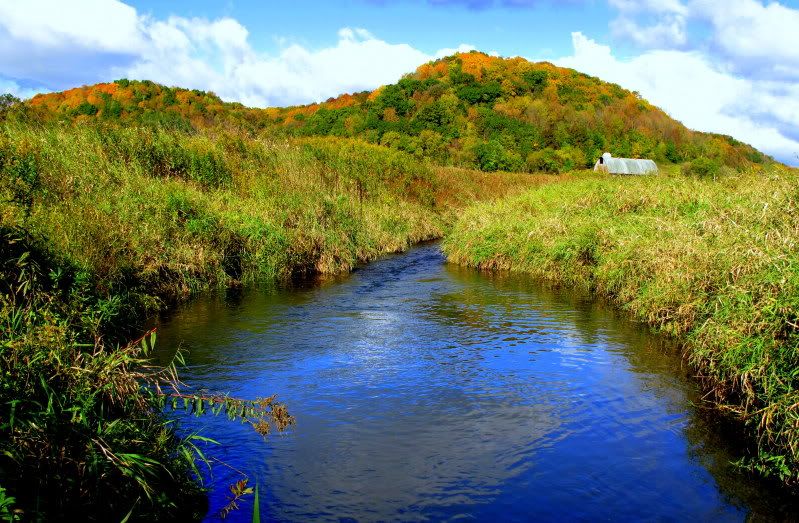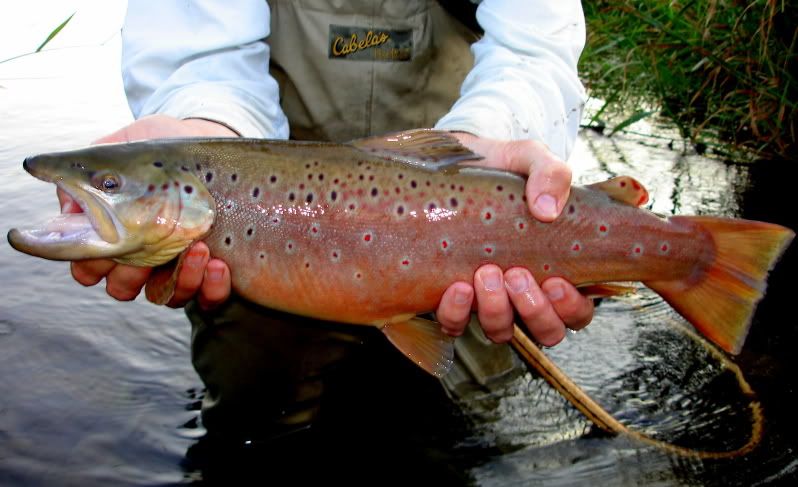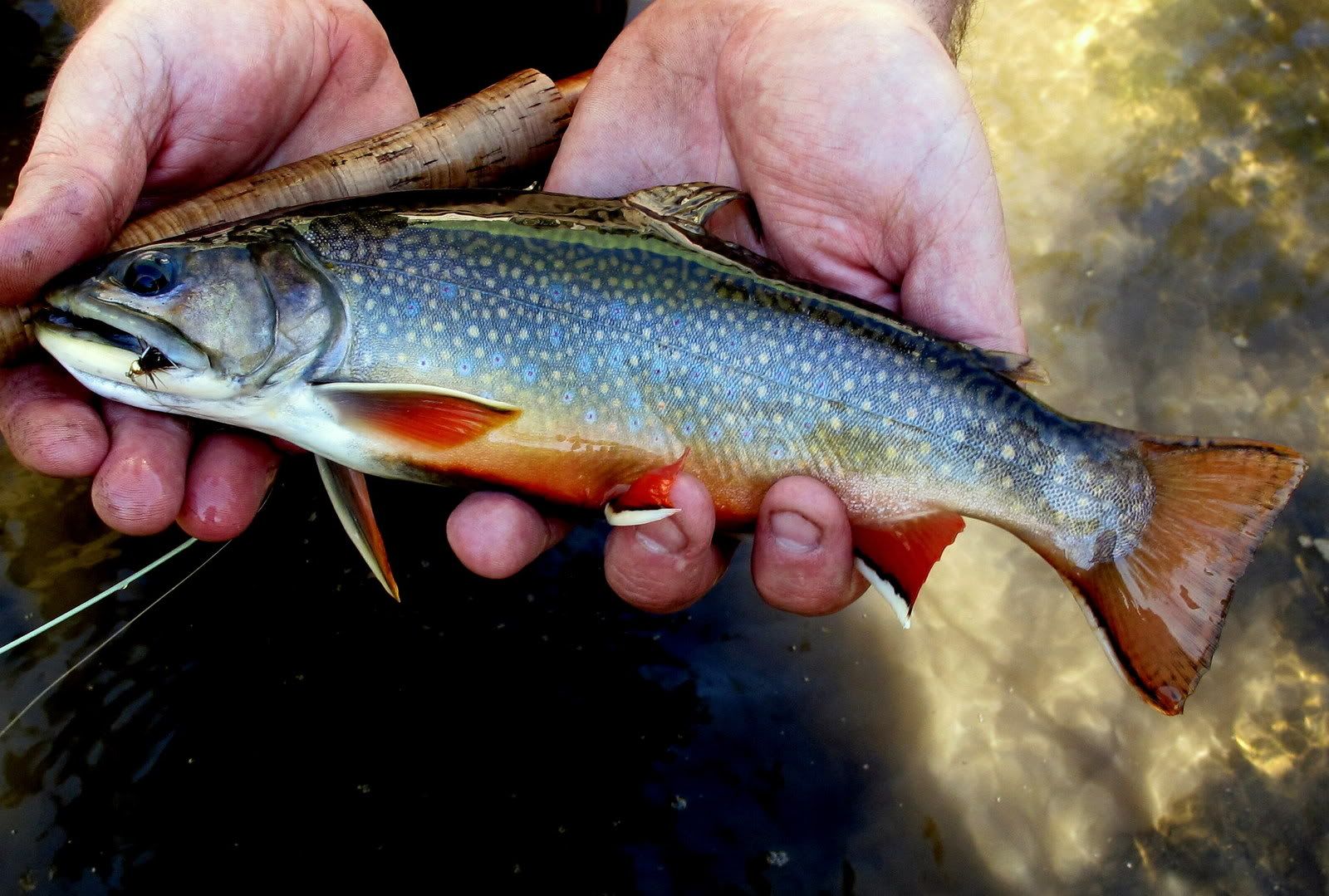The last day of season I saw the biggest trout I have ever seen in my life in this hole. It will be there again in September
The first cold snap always makes me smile. The change of weather turns the woods to a tapestry of
amazing colors. That same cold snap that changes the colors of the leaves also turns on an instinct in the trout. The urge to reproduce is in full gear.
Most times the trout get going a little early. This urge typically causes them to swim upstream. The smaller head waters are where they are in search of. The breeding process doesn't actually start until late October or early November. This doesn't stop the wayward trout. Their wander lust has already been turned on and they are on a mission.
Male trout are the colorful ones of the trout world. This male brown is all decked out in his courting apparel.
Big trout that typically live in a large stream head up the small tributaries. They can swim a mile in a day easily. These fish are out of their typical lays and deeper holes. They are driven to the smaller water. The head waters are where the bottom make up perfect for laying eggs. The smaller pea sized pebbles are what they are in search of. The head waters also are better for the temperature range they require. The females lay their eggs in small depressions in the pebbles and the males fertilize the eggs and their business is done.
During this time they are opportunistic eaters. This is the time of the year you may catch a 25 inch trout in 14 inches of water. They already are getting their Fall colors and eating is secondary after the mating itch. Some male trout can look almost tropical because of their bright colors at this time of the year.
This male brookie has his finest tuxedo on to attract the females to him in the Fall already.
These times are called BIG trout times. Don't just target the deeper water. Fish every run and every weeded shallow stream bank. The bigguns will be in spots they are not typically. Get out there after the first cold snap and catch a monster.







 Reply With Quote
Reply With Quote